Small mammals at Chain Lakes, what did we find?
Nongame wildlife surveys continue at Chain Lakes Wildlife Habitat Management Area (WHMA). Nongame Biologist Anika Mahoney and Technician Frank Stetler have begun small mammal trapping and are targeting their search on two Species of Greatest Conservation Need, the olive-backed pocket mouse and the sagebrush vole, that are predicted to occur within the WHMA. Did they find them?
To increase the chances of capturing these rare species, Game and Fish is using information from recent research from University of Wyoming graduate student Kristina Harkins. She documented increased trapping success for the elusive pocket mouse using an uncommon trap and bait combination- a mesh-sided Havahart trap baited with birdseed. The granivorous pocket mouse seems to prefer bird seed to more commonly used baits, such as peanut butter and oats.
The first week of trapping in salt desert shrub habitat at Chain Lakes was a great success, resulting in 12 captures of olive-backed pocket mouse , and one capture of sagebrush vole. Four additional and equally fascinating species were also captured: Ord’s kangaroo rat (Wyoming’s only kangaroo rat), the fierce northern grasshopper mouse (a primarily carnivorous mouse known to kill and eat animals larger than themselves, including other mice, and which ‘howl’ in territorial defense), the North American deer mouse (our most common mouse), and the strikingly patterned thirteen-lined ground squirrel.
In the coming weeks, trapping efforts will be focused in other dominant habitats within the WHMA, including sagebrush steppe and the unique riparian/dune/playa habitat surrounding the Chain Lakes.
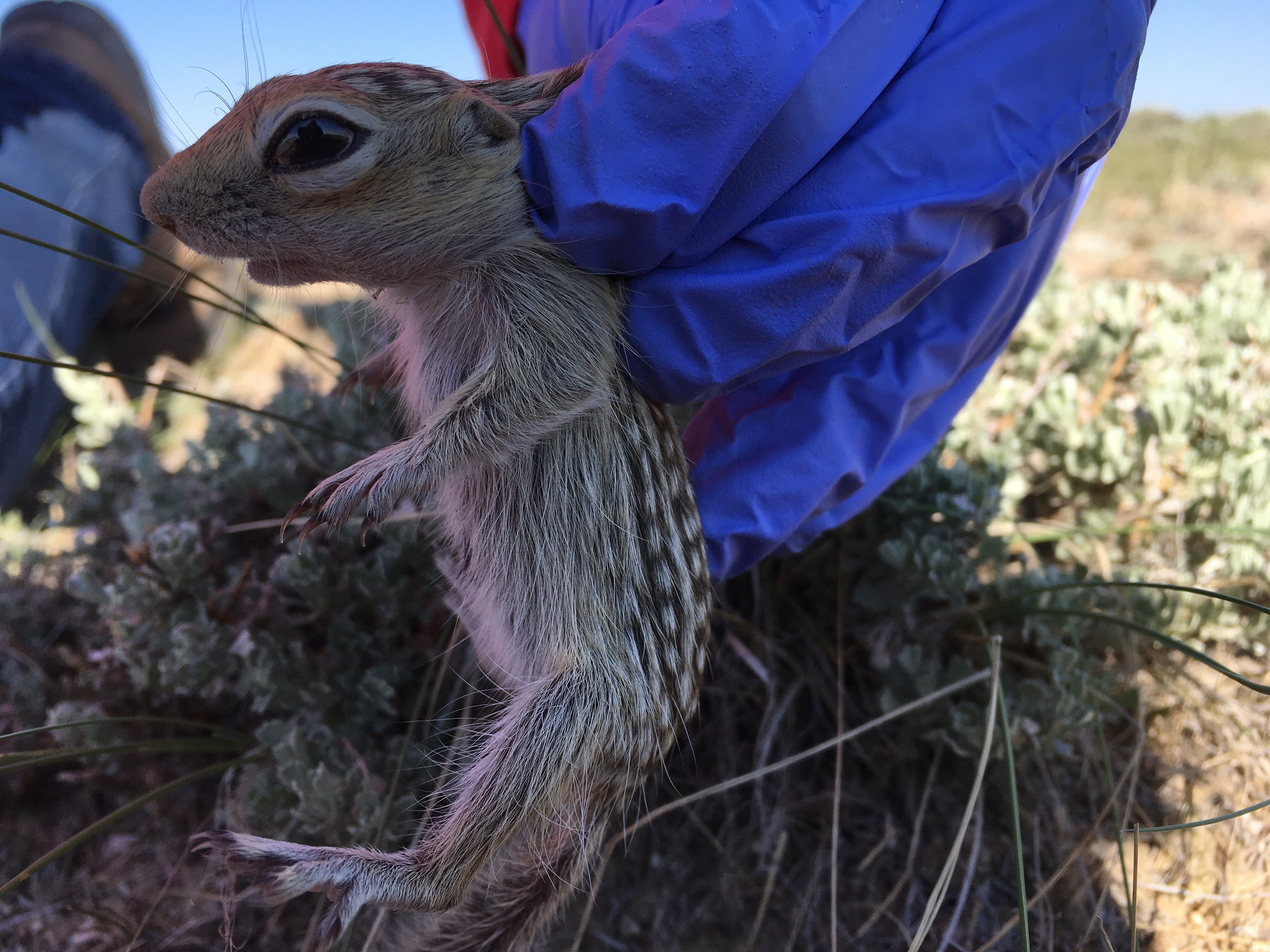?width=450&height=337)
At left: Thirteen-lined ground squirrel juvenile. These ground squirrels hibernate through the winter, and they were once frequently called the leopard ground squirrel, thanks to their distinctive fur pattern.
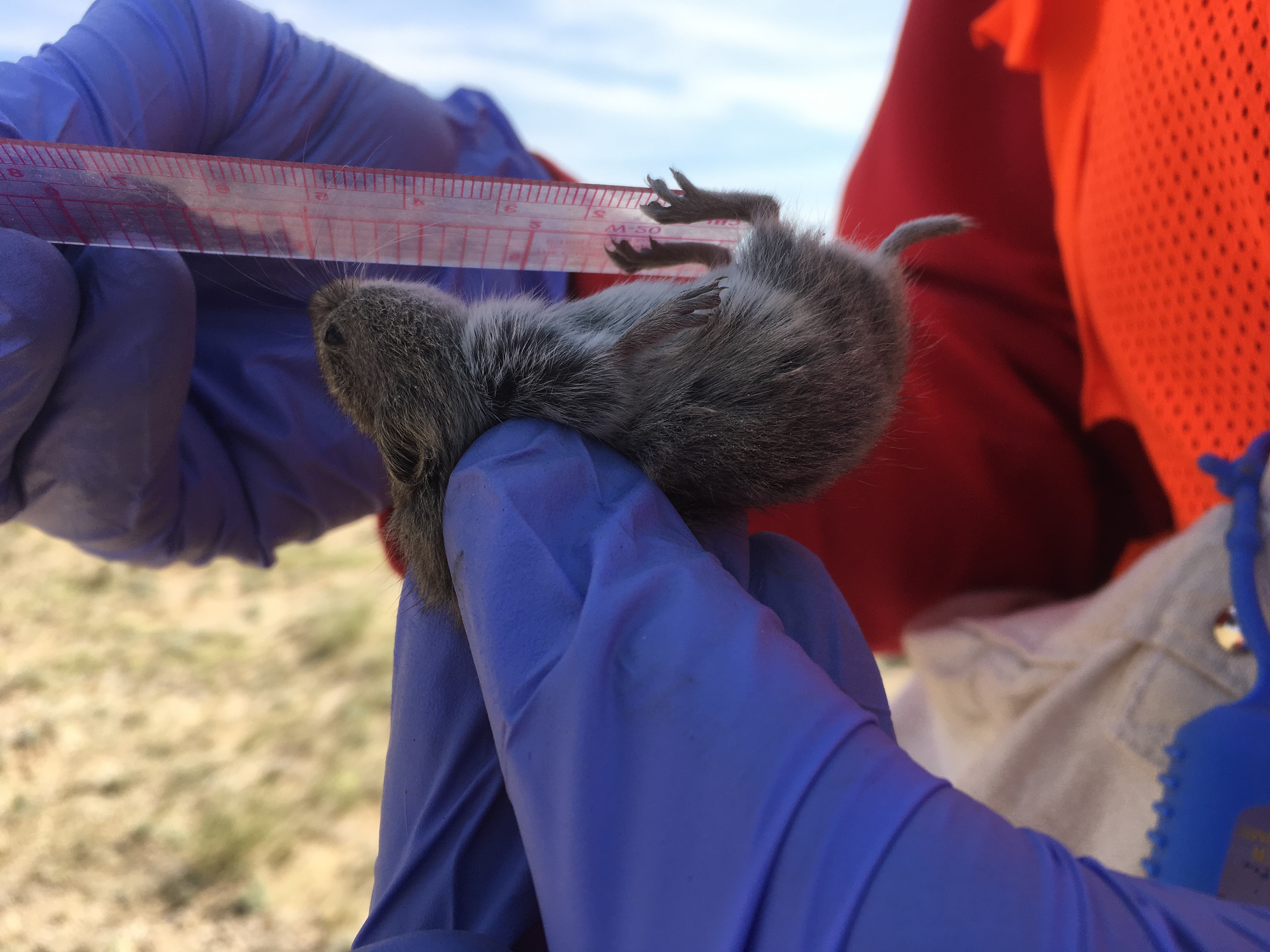?width=325&height=243)
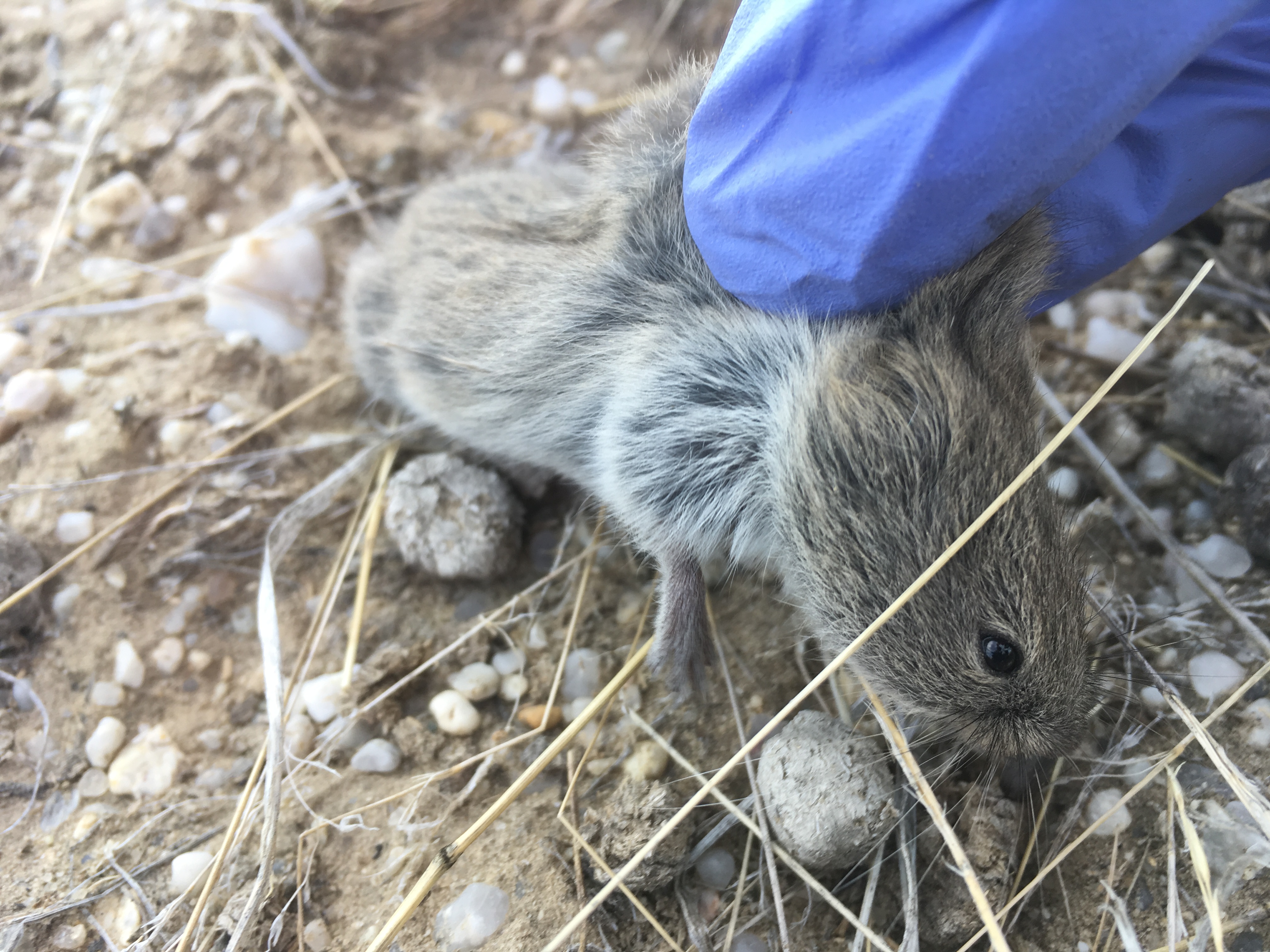?width=325&height=243)
Above: The sagebrush vole’s range mirrors the distribution of big sagebrush (Artemisia tridentata), and this species has rarely been documented in habitats without sagebrush. This primarily herbivorous vole also tunnels underground, but unlike the pocket mouse, isn’t known to cache food for the winter. Because of its close ties to sagebrush habitat, the Sagebrush Vole is likely to be negatively affected by the loss or degradation of sagebrush habitat. Although the Sagebrush Vole is broadly distributed across the state, it’s generally been captured at low rates, and little is known regarding its population trends within the state.
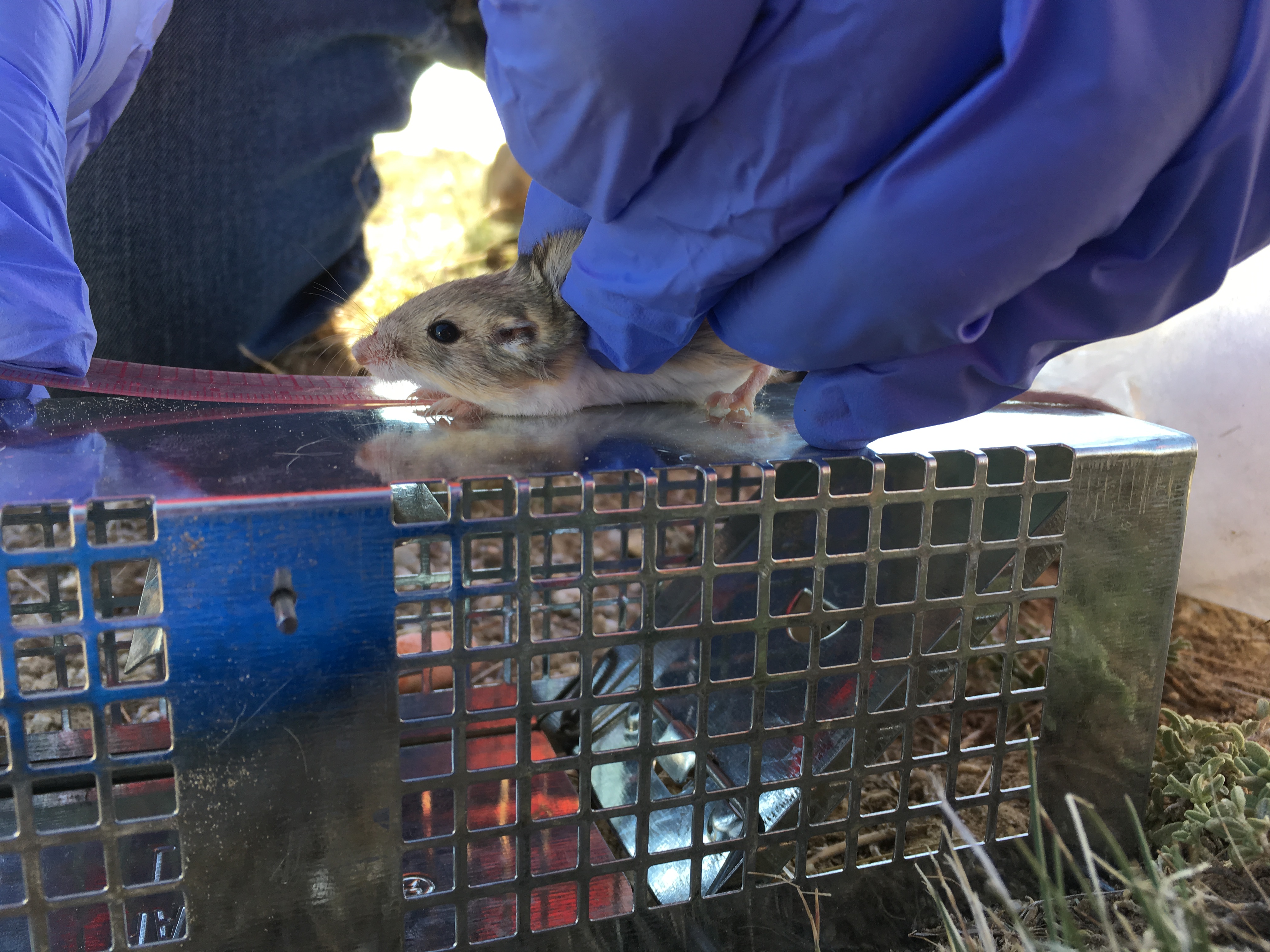?width=325&height=243)
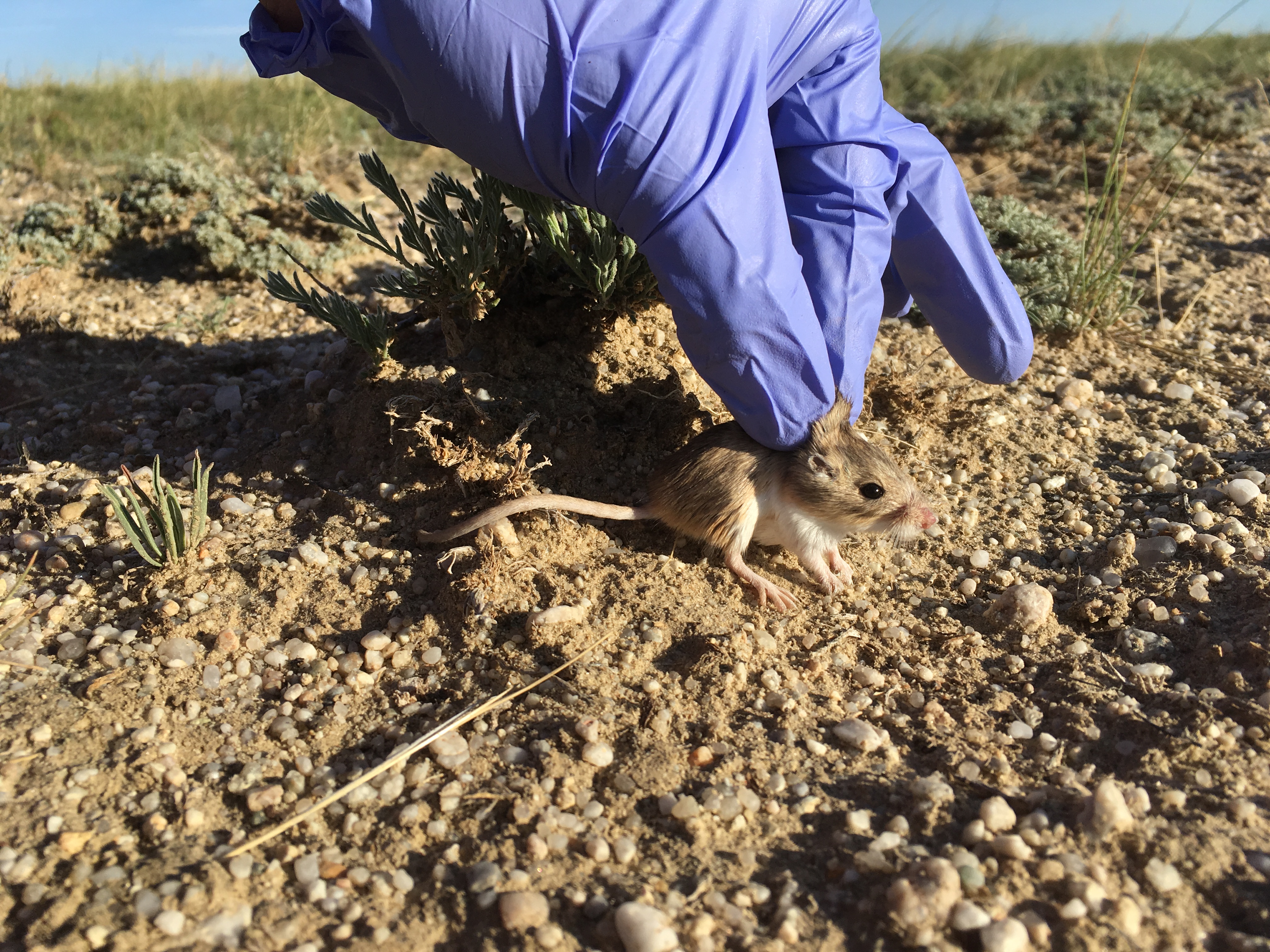
Above: The olive-backed pocket mouse has external cheek pouches, which are used to carry food. Although little is known regarding this species’ habits in Wyoming, in other parts of its range it spends up to eight months in underground burrows, surviving the winter on cached seeds. Prior to 2010, there were only ~30 records of the species within the state. The Game and Fish has funded recent efforts to collect more information on this species’ distribution and population within the state.
To increase the chances of capturing these rare species, Game and Fish is using information from recent research from University of Wyoming graduate student Kristina Harkins. She documented increased trapping success for the elusive pocket mouse using an uncommon trap and bait combination- a mesh-sided Havahart trap baited with birdseed. The granivorous pocket mouse seems to prefer bird seed to more commonly used baits, such as peanut butter and oats.
The first week of trapping in salt desert shrub habitat at Chain Lakes was a great success, resulting in 12 captures of olive-backed pocket mouse , and one capture of sagebrush vole. Four additional and equally fascinating species were also captured: Ord’s kangaroo rat (Wyoming’s only kangaroo rat), the fierce northern grasshopper mouse (a primarily carnivorous mouse known to kill and eat animals larger than themselves, including other mice, and which ‘howl’ in territorial defense), the North American deer mouse (our most common mouse), and the strikingly patterned thirteen-lined ground squirrel.
In the coming weeks, trapping efforts will be focused in other dominant habitats within the WHMA, including sagebrush steppe and the unique riparian/dune/playa habitat surrounding the Chain Lakes.
At left: Thirteen-lined ground squirrel juvenile. These ground squirrels hibernate through the winter, and they were once frequently called the leopard ground squirrel, thanks to their distinctive fur pattern.
Above: The sagebrush vole’s range mirrors the distribution of big sagebrush (Artemisia tridentata), and this species has rarely been documented in habitats without sagebrush. This primarily herbivorous vole also tunnels underground, but unlike the pocket mouse, isn’t known to cache food for the winter. Because of its close ties to sagebrush habitat, the Sagebrush Vole is likely to be negatively affected by the loss or degradation of sagebrush habitat. Although the Sagebrush Vole is broadly distributed across the state, it’s generally been captured at low rates, and little is known regarding its population trends within the state.
Above: The olive-backed pocket mouse has external cheek pouches, which are used to carry food. Although little is known regarding this species’ habits in Wyoming, in other parts of its range it spends up to eight months in underground burrows, surviving the winter on cached seeds. Prior to 2010, there were only ~30 records of the species within the state. The Game and Fish has funded recent efforts to collect more information on this species’ distribution and population within the state.
307-332-2688
